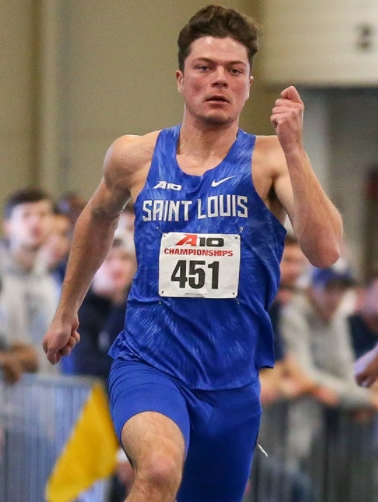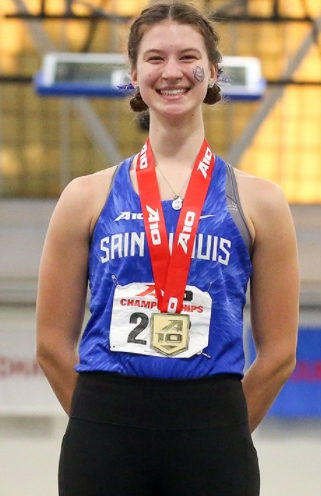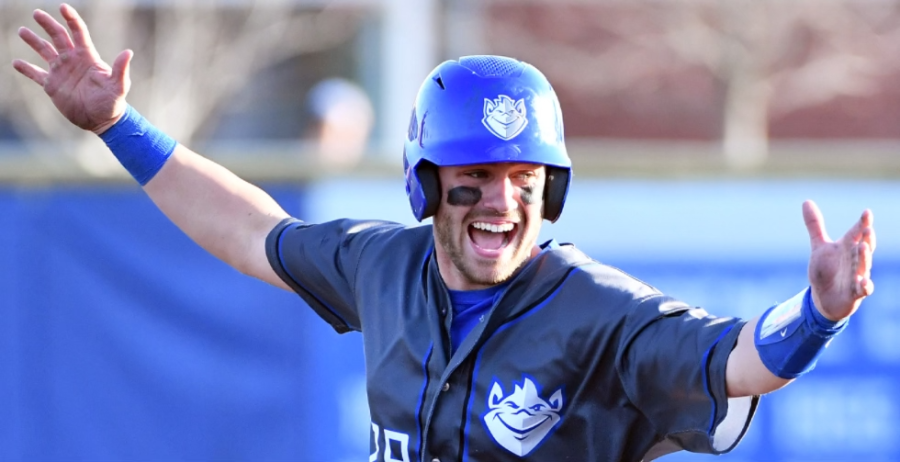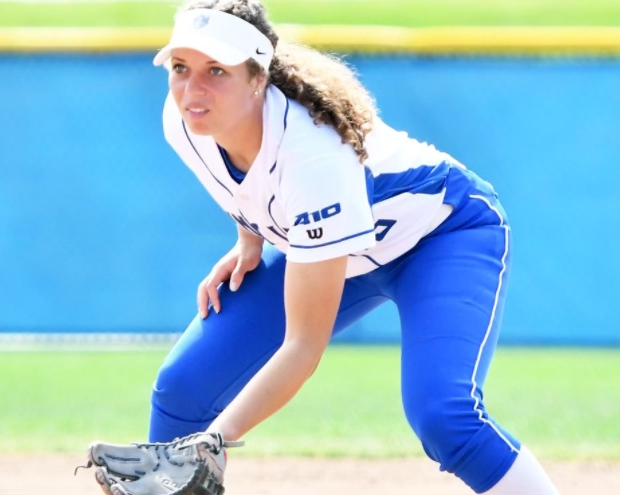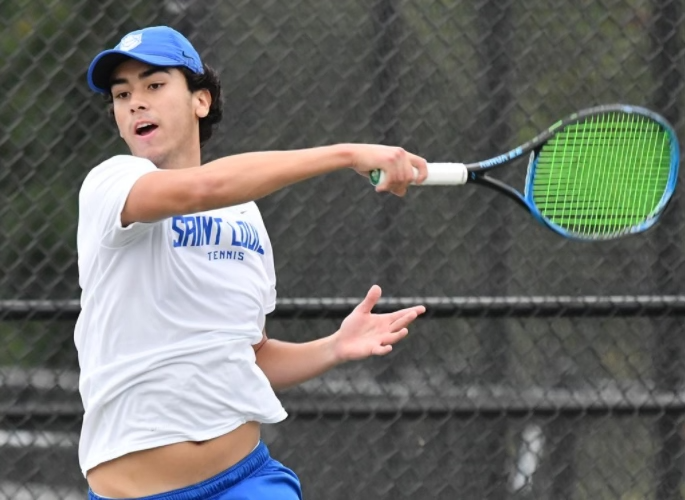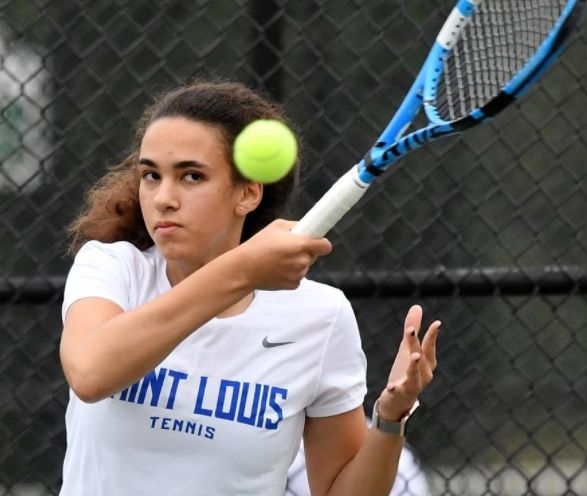I never saw myself at Saint Louis University. My dream was never to be a Billiken. In fact, when I first started playing, I ranked every college field hockey team. SLU was in the bottom percent of the list. But, things happen. Life doesn’t go as planned and sometimes, you have to take the best offer you get. In March of my senior year of high school, that offer was from SLU. By the end of that month, I was a Billiken. I did my unofficial visit, official visit, and signed to the team within three weeks. It was a whirlwind.
As a freshman, I was beyond excited to be here. My dreams of playing Division I field hockey were almost dashed, but SLU had taken me on. I knew I needed to not only prove myself but make my career count. At that point, the 40 minute drive to practice, the bare bones staff, the minimalist locker room didn’t bother me. I knew I just needed to be grateful. The phrase, “You don’t belong here,” rang loud in my head. I was in no position to talk.
Very quickly, however, I realized that things I thought I was just being picky about just didn’t happen in other places. When you confront your administration on the struggles of being off campus, your team administrator doesn’t sit you down and give you an hour long speech about gratitude. When you get home from practice, you don’t have to wait until the next day to go to the training room, either for injury or illness. When you go to practice, you don’t have to cross your fingers for an athletic trainer that you know, or even one who will introduce themselves to you. You don’t have to spend your time in college athletics trying to convince someone that you and your team are worth spending money on. Sure, not every facility is going to be state of the art. Not every locker room is going to have your picture above your locker. Not every coaching staff is going to be five coaches deep. But that wasn’t what actually upset me. What upset me was that whenever I challenged any part of my career, I was told I wasn’t being grateful. Ironic, considering for most of my career, I laid my head down at night and thanked God for giving me the opportunity to do something I had only dreamed of when I was fourteen.
I’ve loved being a Billiken despite all those things. I loved getting to travel the country with anywhere from 18 to 22 of my best friends. I loved getting to wake up every day and do the thing I loved most. I loved getting to lift weights in Chaifetz. I loved how I felt after a hard conditioning session. I loved how I felt the day after preseason ended. I loved how I felt every time the team stood together before a game and sang the national anthem. I loved every part of it. I will cherish the memories I made in a Billiken uniform for years. I am proud to be a Billiken. But I also know that every athletic department has its faults.
As proud as I am and was to be on the team here, it never ceased to shatter my heart when I told someone I played field hockey for the university and they responded, “Oh, I didn’t know we had a team!”. To which I, and many of my teammates were forced to respond, “Well, that’s probably because we don’t have a field on campus”. In Missouri, plenty of people have never seen field hockey before. Its exposure here is nothing like the environment from which I came in Pennsylvania. For a university with such a large athletic following, I always wondered what it would be like to play in front of a crowd even the size of a women’s soccer match. I have always envied men’s soccer for their ability to pack a stadium. This brings me to another point – I love to watch other teams play.
I try to attend as many games as I can. Meanwhile, we’ve had about 10 other student athletes come to support us during my career. Granted, it was a 40 minute drive to get to our field. Quite honestly, the fact that anyone made that effort at all was never lost on us. But that didn’t change that it felt almost cruel for us to be asked to volunteer our time for teams that sometimes never acknowledged us when we passed them on campus.
During my time at SLU, I’ve had four strength coaches, two different head coaches, and more athletic trainers than I can count. I still don’t know what some of their names were. They were with us for one or two practices and never bothered to tell us their names. For one, their training kit didn’t make the trip with them to SportPort. Thank God no one got hurt that day. The inconsistency is something that has caused me to grit my teeth many times throughout my career. Especially when the administration’s response for anything we asked for was that we needed to be more consistent. Unfortunately, the shock of being told, “I’m leaving,” wore off pretty quickly for me. When in your freshman year you lose five of your teammates, your head coach, and your strength coach, the conversation grows old. We are still conditioned that every time a meeting is called to expect the worst. I can’t tell you how many times I walked into a meeting thinking, “This is it. They’ve finally cut us,” or even, “I wonder who’s leaving this time”. It felt like it never ended. There was no security, and by my junior year it became a running joke that getting to know our athletic trainer or strength trainer wasn’t even worth it. We knew that they would leave by the end of the year anyway.
Field hockey is not the only sport on campus without a home at SLU. Tennis plays in Forest Park. The tennis team doesn’t even have locker rooms in Chaifetz which was a privilege for us. The swim team constantly battles poor water conditions in the Rec. Throwers on the track team will finally get a new and improved throwing area for the upcoming season. Women’s track got a bigger locker room when women’s soccer moved out of Chaifetz and into the facility outside Hermann. It was witnessing such nuances while experiencing the things I have and listening to other female athlete’s stories that forced me out of my stupor pretty quickly. College athletics was not what I thought it was. Sometimes, I was disappointed in the experience I had.
In the end, I know I can’t change what happened throughout my career. I have no control over whether or not field hockey gets a field on campus or tennis gets their courts. I can’t force strength coaches or athletic trainers to stay. But what I can do is make the best of a less than ideal situation. I wouldn’t call my experience bad, because it simply wasn’t. I was blessed with a team who loves to make things fun. They found and spread joy whenever they could. Even on the days when we woke up at 5 in the morning to be at the field by 6. On the worst conditioning days we listened to music. If that wasn’t an option, we would sing or joke amongst ourselves. If someone was having a bad day, that was when you saw our team come alive to stand by each other and support one another. The day we listened to our head coach tell us she was leaving, we looked around at each other, either with glazed eyes or tear streaked faces and we resolved to control what we could control. While the pandemic took the worst parts of that spring season from us, we rallied to be there for one another. That was when I really learned what the word “team” meant.
In the end, I’m disappointed by the way adults in the athletic department treated young women who were simply trying to do the thing they enjoy most at a school they love. I am not, however, disappointed in the way my team has handled our burdens, ever. Every time we were handed a bad situation, we handled it with class and grace. It wasn’t always easy, and often it ate into a lot of our personal time. That never mattered once we were on the field, though. We had success despite a system that sometimes felt like it was designed to work against us. I walk away as a senior who played field hockey for four years in a Billiken uniform. I lost every game my freshman year. I helped SLU to their best record since 2006 this year. I helped my team beat a defending A-10 champion. I made some of my best friends on this team. I created connections with some of the best coaches and people in their field. I played hockey against some of the best teams in the nation, I have been to states I never saw before I came to college. I have had the privilege of working with women who are so compelled by injustice they can’t help but speak up about it. I was pushed every day to be a better athlete, a better player, a better woman, and a better person. Everything I experienced during my time in a Billiken uniform only made me better for it.
Retirement changes the way you look at things. I can only do what I have done. I have no more time left to change statistics or wish things went differently. The little moments of this season are burned into my brain because I willed them to be. Four years is a very finite amount of time. Sometimes you don’t realize that until you are staring the end right in the face. I might never play field hockey competitively again but at the end of the day, I am proud of everything I accomplished while I could play. When you come in as a freshman, you often have huge ideas of grandeur and ESPN highlights and unimaginable success. For some, that comes true. For me, I had what might appear to some to be a very mundane career. But my teammates and I know it was anything but mundane. I will forever be a Billiken. Sometimes, that didn’t feel like a tangible goal. But I still made my dreams come true. I worked hard when no one was watching, and I spoke up when I felt I needed to. Even if I’ve only made myself proud, that is all that matters. I know there is change around the corner. For my team, and every women’s team here at SLU. Now, I have to cheer it on from afar. And as much as it fills and breaks my heart at the same time, I’m finally forced to say the words I’ve waited an entire career to say out loud: Farewell, Bills. Thank you for everything.


